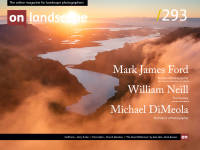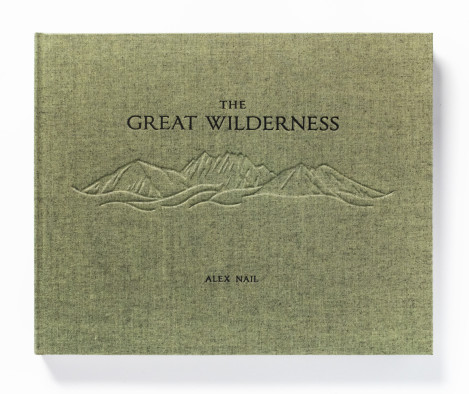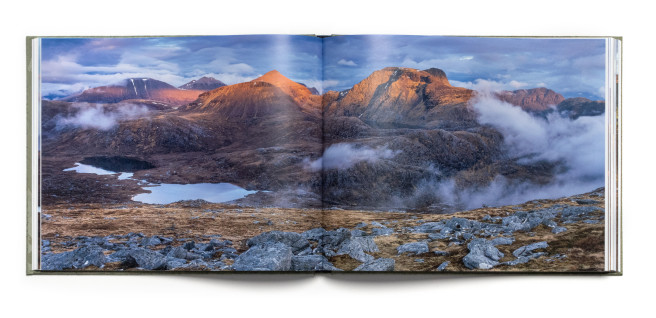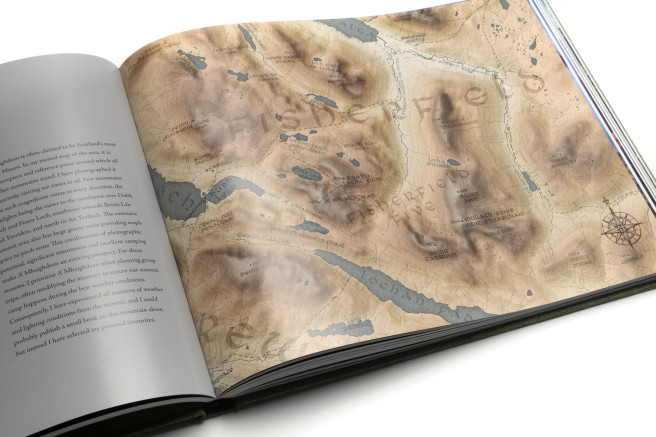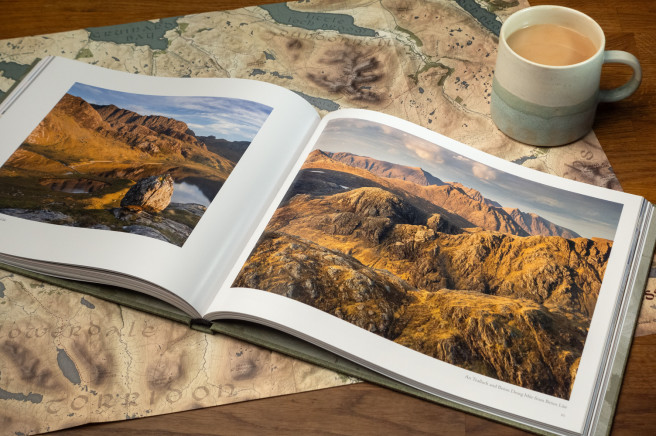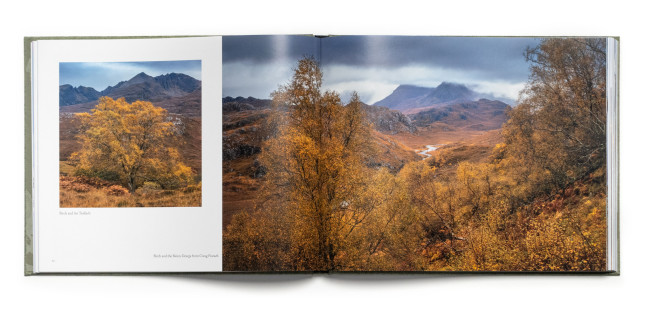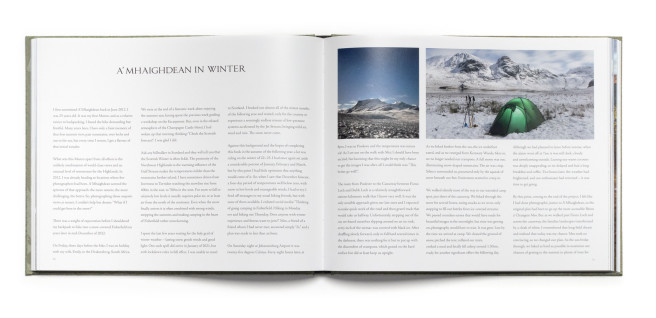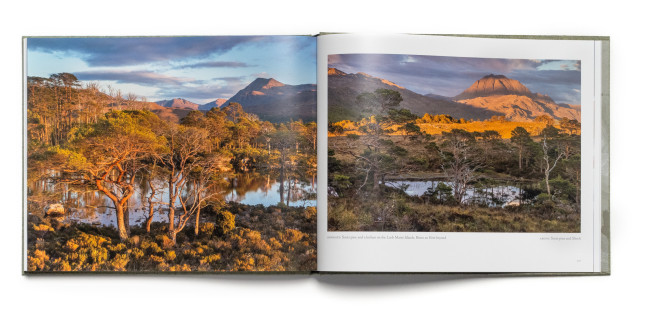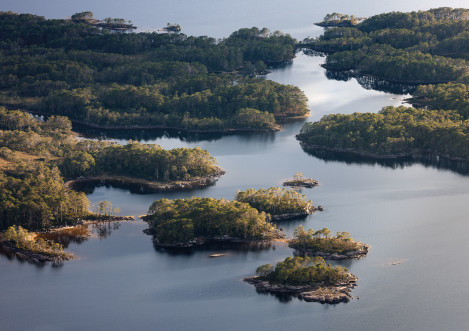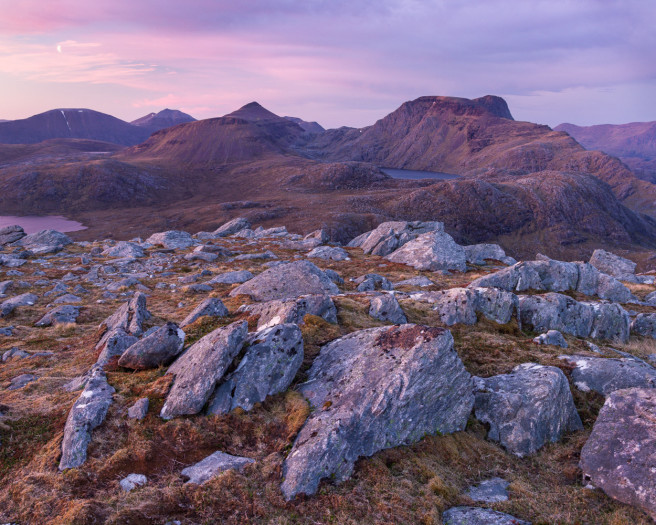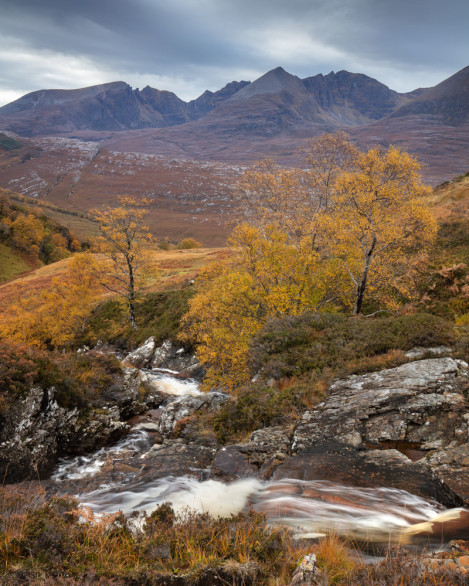Book Review

Tim Parkin
Amateur Photographer who plays with big cameras and film when in between digital photographs.
I think it’s fair to say that only a handful of people consistently take great photographs of the mountains in the UK. For one, the act of getting up into the mountains isn’t trivial. For an additional hurdle, if you want all season coverage, getting up into the mountains in winter is a hard and potentially dangerous activity.
Once you’ve filtered for the people who can do this regularly, you need to filter them down even further on the ability to take great photographs. The biggest difference between roadside1 and mountain photography is that if you want to recompose a picture, instead of walking around your subject for a few minutes, you need to climb up and down cliffs and potentially try to find another mountain to ascend to get a different view. This means a great deal of planning in advance if you want to be in the right place.
[1] if you want an arbitrary definition, anything less than a km from the car
Finally, once we’ve filtered down to people who can do this, we then get to the point where we’re looking for people who are willing to commit to a multi-year project to amass a body of work on an area and to build this into an engaging book.
I reckon that means there’s maybe 10 photographers in the UK capable of committing to this and it’s not surprise that only one or two follow it up long enough actually to produce a book.
So, we should be grateful to Alex for the persistence, vision and skill to get to this point. And that’s before even considering the book!!
The Project
So before taking a look at the book, what is it about. The Great Wilderness sounds like it’s a secret hideaway in the depths of the Himalayas, a place that takes a backcountry flight to get close to and then multiple kayak portages to arrive at the base of a hidden glacier below imposing mountains. Well, it’s probably as close as you’ll get to this in Scotland and the alternative book name would have been “The Fisherfield Forest” which suggests an old growth Canadian boreal forest in the depths of the Yukon, which is equally misleading when, in fact, it’s a mostly treeless region of bog and remote mountains on the West coast of Scotland. For those a little familiar with the Highlands, it spans the area between Loch Maree and An Teallach/Loch Broom.
I asked Alex why he chose to follow up the Northwest book with this particular area
“The natural progression from ‘Northwest’ seemed to simply be ‘West’. So during the first lockdown summer, I headed to Kintail for a few days. It's a wonderful mountain area, and I enjoyed some great weather too, but it was clear after that first hike that there was less photographic potential. The more continuous ridges in much of the highlands might be great if you want to bag multiple summits in a day, but it places restrictions on the views from the tops and restricts early and late light from getting into the valleys.
The following week I was running a workshop in Fisherfield and realised just how much potential there was that I hadn't really delivered upon in Northwest. That autumn I planned a trip hiking in the Dundonnel area that went brilliantly, and that sealed the deal.”
And there is so much on offer in the area. It’s one of the most geologically interesting places in Scotland, with some of the oldest rocks in the world. It also has some of the oldest pinewood forests in the area around Loch Maree, internationally recognised by UNSECO.
Alex has divided the book into four main sections covering An-Teallach, Fisherfield 6, Letterewe and finally Loch Maree. Each section has a map, an introduction and there are four essays spread throughout detailing some of Alex’s experiences creating the pictures for the book.
There are also some visually engaging maps of the area that are art works in themselves. Exploring them is like looking for treasure on a old pirate map and in the following pages, treasyre is exactly what we get. Here’s a sample of the map from the An-Teallach area.
I think you’ll agree that a wandering eye on this feels more organic than the equivalent Ordnance Survey map.
The Book
I won’t say a lot about the quality of the book beyond the fact that you won’t get much better. The printing is amazing, the cloth-wrapped hardcover with the embossed lettering and graphics is superb, the paper is thick with a subtle silk sheen, and the binding is tight without hindering the view of the double-page spread panoramas included. Check the photos if you want to see more.
I’ll admit my involvement to some small degree during the printing phase of the book process. Alex and I both print books at Johnson’s of Nantwich, a fabulous small print company that have been very helpful in allowing us to work on press and also to experiment some with the way that the files are prepared for the book, the proofs printed and to see how the final book folios come off press, allowing us to tweak the colours as things are printing.
If you’ve ever printed a book, I think you will probably have encountered the occasional problem, and a company is made or broken by its attitude to how these can be avoided, fixed or circumvented in a different manner. Our experiences have been no different (with multiple printers) and Johnson’s allowed Alex and I to try different methods to achieve the best printing results. Whilst not perfect (no litho print process is - although with the very knowledgeable press manager Matt gets it close) it has meant that the printed images are very, very close to the digital files I can see in Indesign.
The success of printing is a balance between never being happy with how good things are going so that you keep on trying to get things better and having a pragmatic approach where you can see the big picture. Between myself and Alex I think we hit a decent balance (he’s the perfectionist by the way!).
I asked Alex if he learned anything while creating his second book project and if he had any advice.
“As far as starting out goes, a project like this is incredibly daunting. So its best just to start and see where you get without tying yourself down to specific goals. Initially I did a few trips with the vague idea that this would be my next book and made 30 or so images that I felt were publishable. Only a handful of those images ended up in the book, but it nevertheless gave me some momentum. If I’d used the kind of specific planning approach, I eventually employed right from the outset it would have been much more difficult to get going and far less enjoyable. So start small and perhaps start with a Zine - it’s a brilliant format to share work and with a small digital (not litho) print you can keep costs down too (not least because case binding a hardback book is about half of the cost!)
As for the design and organisation, I know of a few people who are far more qualified to talk on the subject (Sandra Bartocha springs to mind)! But I do think it is important to make design choices that are personal to you. In many ways, the design of the book is as boring as it gets! Photographs are simply presented, generally full bleed or with even borders on each side because I don’t want viewers get distracted by an unusual ‘designer’ layout. There are no blank pages for “breathing space” – I find that annoying! The paper is a high quality, but still fairly standard 200gsm silk paper so you don’t notice the paper either. But I’ve pushed the boat out in other respects. I’ve gone with a green cloth cover because I just got bored of all these neutral tones we tend to see on the covers of photography books (and I loved this particular book cloth). I also tested the cloth quite extensively to make sure it didn’t mark easily, something that has bothered me about other books in the past that only look smart when they are new! I also both embossed and foiled the cover, which adds an extra process to the production and adds a fair chunk to the cost, but to me that kind of thing builds a bit of curiosity and excitement to open the book in the first place.”
The Photographs
As much as all the binding, paper, maps, essays, graphic design and the likes are very interesting and a key component of a successful book, its the pictures that we’re here for really. If they don’t live up to expectations or are repetitive or if there are too many ‘fillers’ then we won’t be fully satisfied.
Fortunately, and not unexpectedly with Alex, the images are all excellent. There are some absolute standouts (the selection of which will probably be different depending on your tastes - see a few of mine below) but there are also a breadth of subject and place that gives an organic sense of place. Nearly every image is a long view of some sort (Alex doesn’t add lots of intimate details, so you’ll have to get that kick from the foreground interest) but the compositions are such that you can feel you’ve actually walked alongside Alex in some way.
One of the pleasing sections for me reflects well on Alex’s environmental credentials. Despite spending time photographing the amazing islands of Loch Maree, he has chosen not to tell that undoubtedly interesting story because to do so might draw too much attention to a very delicate environment. He’s absolutely right to do so, as there have only recently been devastating fires from camping on one of the main islands, with locals spending multiple days trying to put them out. I hope some of this delicate approach rubs off on the book’s readers.
Everybody will have their own favourite photographs from the book, and I'm no exception, so I asked Alex if I could include a few of my favourites, without spoiling some of the surprise for if you buy the book! So here's a couple and there are a few more in the gallery at the bottom.
Conclusion
I think it’s fairly obvious that I really like the book. Alex has hit publishing gold again with “The Great Wilderness”, a visual feast delivered from the most remote mountain area in Scotland. I spent my own money buying a copy (I know the margins on books like this, so I’ll always buy if I can) and don’t regret a penny. It epitomises much of what I like about photography, and photography books in general. I also reminds me so much of why I moved to the Highlands.
If you’re a photographer and love grand landscapes and mountains, then look no further for your next book, and if you don’t have Alex’s first book (NorthWest), I’d keep an eye on those second-hand websites! Highly recommended! (and it will sell out!).
Go and buy the book direct from Alex’s website - give him something to do while he’s helping nurse the baby!
My final question to Alex was “what’s next?”
“The worst thing about finishing 'Northwest' was giving myself a one-year break from projects, which actually manifested as a purposeless creative vacuum, so I won't make that mistake again! Torridon is next, and I plan to almost exactly duplicate the format and design for that book. I think some people will see this as a little repetitive, just going over old ground (literally) that I covered in the last book. But I have realised that if there is anything that sets me apart as a photographer, its a determination and level of obsession which ultimately allows me to produce work that few others would be willing to commit to. I already have some images under my belt, but it will be a few years at least before that book emerges, and perhaps more once the full implications of raising a child hit home!”
And finally, keep an eye out for a new podcast feature in the New Year with Joe Cornish where Alex will be our first guest!

